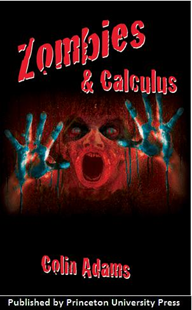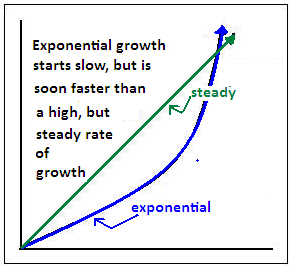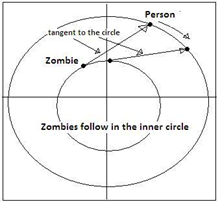Collin Adams, professor of mathematics, author and humour columnist, in his book, Zombies and Calculus, brings out the excitement and versatility of Calculus for those who know the math and also the uninitiated, says S.Ananthanarayanan.
Trying to understand Calculus, the science of how quantities that depend on each other change as one or more of them change, may be the turning point in a students 'life when she chooses to study history or politics or biology or medicine – anything that preserves her from the infernal subject. But she may find that Calculus has now invaded most fields of study, like economics, business studies, biology, psychology, which were considered safe for those in fear of higher mathematics. The good news is that learning Calculus is really not out of reach of many, certainly within the capability of advanced students in any field of study.
Zombies and Calculus, now brought out in paperback by Princeton University Press, is a short, racing story of a small university community that fights to survive while a virus sweeps the world, shows with wit, and compassion for the less initiated, that the ideas of Calculus are indeed easy and applicable in varied spheres of life. And to this purpose, the setting where he performs his conjuring tricks with math is a battleground of a handful of survivors against hordes of erstwhile colleagues whom the virus has turned into zombies – or people who have lost the use of cognition and have become organic machines, with no thoughts or thinking, except motivation to attack uninfected humans. The zombie attacks for food, but if the victim survives, she too gets infected and begins to attack the uninfected around her.

The action starts in an undergraduate Calculus class, where what appears to be a student walks in late and attacks one of those already there. Things move with lightning speed, and the class and a few others see that the campus is teeming with these dangerous creatures, lately infected and seeking new victims. The class rushes to find safety and soon regroups to consider a plan of action.
And while the class confounds and dithers, Craig Williams, the mathematics teacher, handles crisis after crisis by reducing the problem of the moment to one which has a solution in calculus! It is an unlikely, or, at least, unusual situation and the plot develops so that every turn presents a mathematical question – but the story stays credible and consistent, and introduces most the ideas of calculus with simplicity and clarity. It is a math book, of course, with detailed footnotes and would inspire current students, or past ones, to enjoy the field – but the book is eminently readable by those who have little calculus, and where help is needed, there are appendices at hand.
Exponential growth
The first math idea introduced is how fast the zombie population is growing. Say each zombie infects five others every day. This makes for a five-fold expansion every day. In just five days, each zombie would give rise to 55 or five raised to the power of five, zombies, and that comes to 3,125. And in the next five days, this number, 3,125, can grow into nearly 10 million. This would then be exponential growth, where the quantum of increase in a quantity increases as fast as the quantity itself is increasing. Fortunately for the plot of the book, however, this does not happen with zombies – for the reason that when zombie numbers increase a great deal, uninfected humans whom they can attack become scarce and neighbours are more likely to be other zombies.

The fact that the numbers of zombies cannot increase beyond a point, which was brought home by the use of simple calculus, brings about a change in the morale and the strategy of the group fighting for survival. They move into a more proactive mode of managing the menace, rather than only trying to escape. One of the first things to think of was defense when face to face with a zombie. A paper weight slipped into a nylon stocking was devised as a weapon, and Craig Williams explains, again with the help of calculus, that swinging this around can create enough impact to crack the average zombie skull.
And speaking of averages, there was the question of how fast people move, and what percent may not be fast enough to get away, if they are chased by a zombie. As Craig did the calculus for this, there arose a problem with saving one of their colleagues, who was injured and inside a car, and alive only because the flocking zombies could not get the windows open. Craig finds a way to help with the case a colleague who was walking slowly across an open field and in risk of being cut off by a zombie before he reaches safety. It turns out the zombie hasn’t the sense to head for a point ahead of where his quarry is at the moment, but always moves directly towards the target. Craig shows, with Calculus, that if a person who is just faster than zombies should move in a circle, the zombies would continuously head directly towards the person and thus fall into a smaller circle, and never catch up with her. One of the group then heads out to where the car has crashed and attracts the zombies away. And he rides his bicycle around in a circle, and gets the zombies fall into circles within his circle, and leave the crashed car unattended long enough for the injured colleague to be rescued.

The story has a happy ending, thanks to surviving humans using math to find safer areas to colonise and ways to keep zombie numbers in check. This is heartening, as we never can tell when zombies may really attack, but Colin Adams’ book could help many of us to appreciate that Calculus can help us understand our world and deal effectively with daily problems that are less frightening, but equally vexatious.
------------------------------------------------------------------------------------------ Do respond to : response@simplescience.in-------------------------------------------